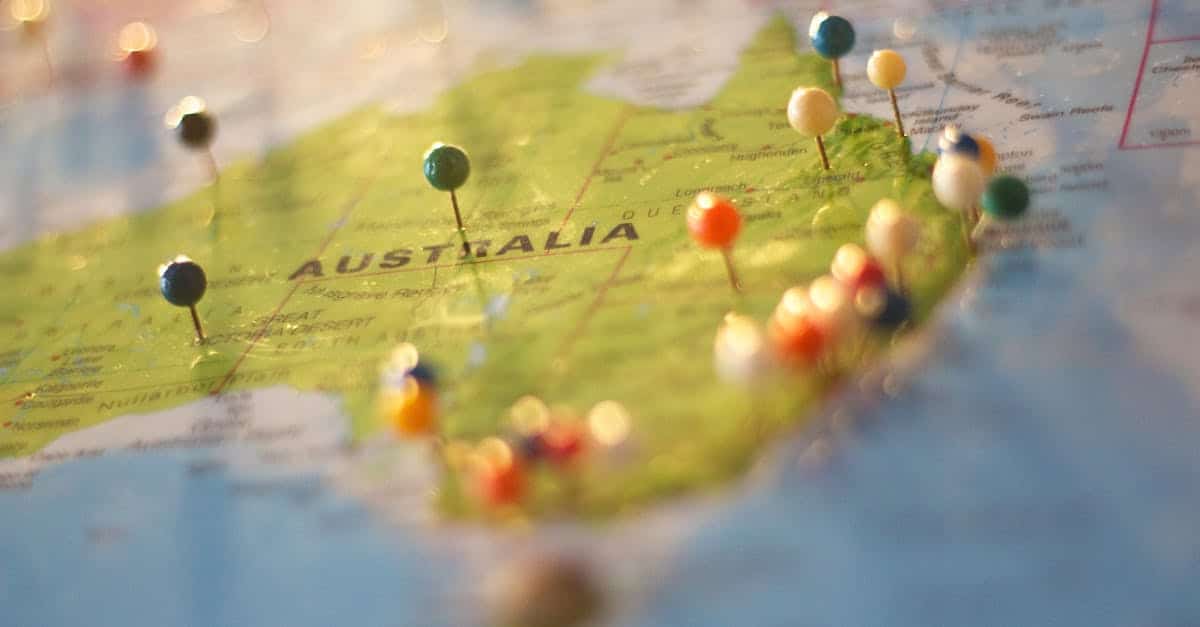|
IN BRIEF
|
Ah, Cuba! This jewel of the Caribbean where cigars are smoked in the warm air, salsa resonates on every street corner and the landscapes are worthy of the most beautiful postcards. If you dream of roaming its sandy beaches, tasting its tasty cuisine or soaking up the fascinating history of its colorful towns, then you’ve come to the right place. But how to turn this dream into reality? Don’t panic! In this article, we will reveal our best tips for planning THE ultimate trip to Cuba. Get ready to be inspired and discover all the secrets to making the most of this captivating destination.
Cuban paradise awaits you
Cuba, the island of rum, cigars and breathtaking landscapes, attracts thousands of travelers every year in search of authenticity and adventure. But how can you ensure that your getaway will be unforgettable? In this article, we reveal practical tips and expert advice to make your stay in Cuba simply breathtaking.
Choosing the right time to visit Cuba
Before diving into the details of your trip, it is essential to choose the best period to leave. The dry season, which extends from November to April, is generally the most popular. The temperatures are pleasant, and you will thus avoid frequent rain. However, feel free to explore other times of the year if you’re willing to brave the humidity!
Events not to be missed
If you want to immerse yourself in local culture, plan your trip around Cuban festivals. THE Havana Carnival in July and the festival of Jazz in October are iconic events that will immerse you in Cuban music and dance.
Establish a flexible but structured itinerary
A well-thought-out itinerary is the key to a successful trip. Set off to discover Havana, the vibrant capital, then explore the Vinales Valley for its renowned tobaccos, and don’t miss the charming town of Trinidad, listed as a UNESCO World Heritage Site.
The must-sees of Cuba
Here are some essential to add to your itinerary:
- Stroll through the colorful streets of Havana
- Visit the tobacco plantations in Viñales
- Bathe in the crystal clear waters of Varadero
- Exploring Trinidad’s Colonial Influences
Book your accommodation
Cuba offers a wide range of accommodation, special cases to luxury hotels. For a complete immersion in the local culture, opt for a casa. These are often run by Cuban families, allowing you to discover homemade dishes and chat with your hosts.
Evaluate accommodation options
Also try youth hostels on a tight budget, or choose an all-inclusive hotel for comfort. Learn about online reviews to ensure a quality experience.
Travel across the island
The transportation system in Cuba may seem confusing, but it is also an adventure in itself! Several options are available to you:
Public transport
Use the collectives (shared taxis) to travel between cities at a lower cost. They’re often crowded, but you’ll meet other travelers and friendly locals!
Rent a car
For more flexibility, consider renting a car. Don’t forget to book in advance, as cars are sometimes scarce, especially in high season. Always check the condition of the car and take note of local traffic rules.
Taste Cuban cuisine
A visit to Cuba would not be complete without savoring the local cuisine. Don’t miss out on tasting the old clothes (pulled meat) and the r arroz con pollo (chicken rice) in typical family restaurants.
Explore street markets
Markets are also a great way to discover Cuban flavors. Treat yourself to fresh fruits, natural juices and homemade dishes. Sometimes the best culinary discoveries are found in humble places!
| Axis | Tips |
| Best period | Visit between November and April for pleasant weather. |
| Budget | Plan a daily budget of 50 to 100 USD. |
| Transportation | Use shared taxis to save money. |
| Accommodation | Opt for casas particulares for local immersion. |
| Activities | Explore beaches and historic cities like Havana. |
| Local cuisine | Taste the ropa vieja and mojito in local restaurants. |
| Language | Learn a few words of Spanish to facilitate exchanges. |
| Internet | Prepare to use prepaid cards for Wi-Fi. |
- Choose the best period: Opt for the dry season, from November to April.
- Establish a flexible itinerary: Include Havana, Varadero and Trinidad.
- Book various accommodations: Mix hotels and casas particulares for a local immersion.
- Provide means of transportation: Use shared taxis or bicycles for transportation.
- Evaluate plane tickets: Compare prices several months in advance.
- Learn a few words of Spanish: Make interactions with locals easier.
- Learn about local culture: Respect Cuban traditions and customs.
- Bring suitable clothing: Bring light clothing and a swimsuit.
- Balancing discovery and relaxation: Alternate visits to sites and moments of rest at the beach.
- Try the local cuisine: Taste typical dishes like ropa vieja and tostones.
Immerse yourself in local culture
To truly capture the essence of Cuba, incorporate cultural activities into your stay. Take salsa classes, visit art galleries, or attend live music performances. There music is at the heart of Cuban life and every street corner can be transformed into an improvised scene!
At the heart of Cuban traditions
Don’t miss out on visiting sites like Museum of the Revolution in Havana, which will immerse you in the fascinating history of this island. Spanish forts and colonial churches are also worth a visit.
Prepare your suitcase carefully
Pack light clothing for the tropical climate, but don’t forget to include a light jacket for cool evenings and comfortable shoes for exploring. And above all, leave room for your future local finds!
The essentials to take
Apart from clothes, remember to bring toiletries, basic medicines and essential items, as these products may be in short supply in some places. A good camera is also essential for capturing memories!
Manage your budget intelligently
Cuba can be both affordable and luxurious; it all depends on your choices. Focus on meals in small restaurants, and avoid touristy places. The cost of living is relatively low, and you can afford a few extras with a little planning.
Exchange money
There currency in Cuba is specific and changing. Plan to exchange money at official offices to avoid excessive fees. Always carry some cash in small denominations, as many businesses do not accept credit cards.
Respect local customs
Respect for Cuban traditions and culture is fundamental. Learn some Spanish expressions to connect with locals. Practice courteous behavior, such as asking permission before taking photos of people.
Adapt to codes of conduct
Enjoy interacting with the local people, who are known for their hospitality. Be open to conversations and don’t be surprised if a stranger approaches you to chat.
Document yourself before your departure
Before leaving, take the time to find out about the political situation and local rules. Travelers should feel informed and cautious to avoid any concerns. Check travel guides, blogs, or even forums for recent tips.
Stay informed
Stay informed about possible changes regarding travel to Cuba. Regulations are evolving quickly and it is essential to have the latest information to guarantee a peaceful stay.
Anticipate the unexpected
Unforeseen events are often inevitable when traveling. Prepare by booking alternative plans and remaining flexible. This could include route adjustments or a change in mode of transportation.
Take advantage of opportunities
Sometimes the best adventures are born from the unexpected. Dare to explore lesser-known areas, or strike up a conversation with students, vendors or artists. Every meeting counts!
Evaluate your memories
After a busy day, take the time to evaluate your experience. Whether it’s jotting down travel ideas for a future trip or keeping a journal of your discoveries, these memories become invaluable over time.
Creating a souvenir album
Don’t forget to photograph every step of your trip, but also take the time to savor the moment. Collect your best photos in an album or slideshow to remember your trip to Cuba and inspire your friends.
Question yourself after the trip
Once you return, take time to reflect on what you have learned. How has this trip changed you? What struck you the most? This will allow you to grow as a traveler and as a person.
Share your experiences
Don’t hesitate to share your experiences with other travelers, whether through articles, blogs or discussions. Your advice might inspire other adventurers to explore Cuba!
A: The best time to visit Cuba is between December and April, when the weather is generally dry and temperatures pleasant.
A: To enter Cuba, you will need a valid passport, a tourist card (visa) and proof of travel insurance.
A: Top attractions include Havana, Varadero, Trinidad, Viñales and the Viñales Valley, as well as historic sites and beautiful beaches.
A: Although speaking Spanish can make interactions easier, many Cubans speak some English, especially in tourist areas.
A: Be sure to try the ropa vieja, congrí, tostones and lobster, as well as the famous cocktails like the mojito and daiquiri.
A: In Cuba, you can use taxis, buses, bike taxis or even rent a car to explore the island.
A: Yes, it is possible to change money at exchange offices, banks and some hotels, but it is advisable to do so in cash.
A: Internet connection is limited, but you can access Wi-Fi in public parks or purchase access cards in some stores.




